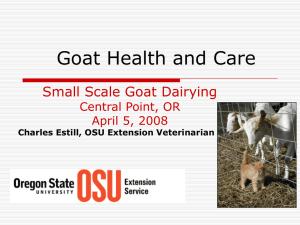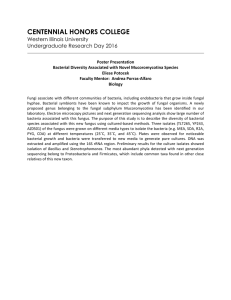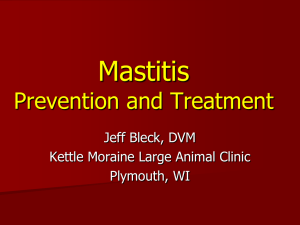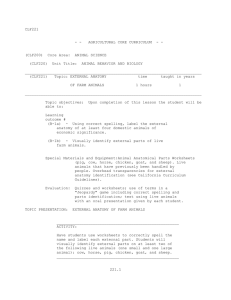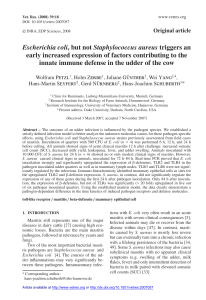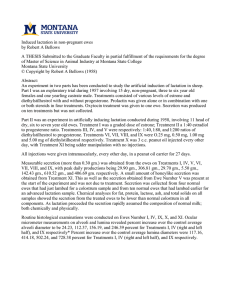The pathogenesis of mastitis in ewes Cooper.S
advertisement
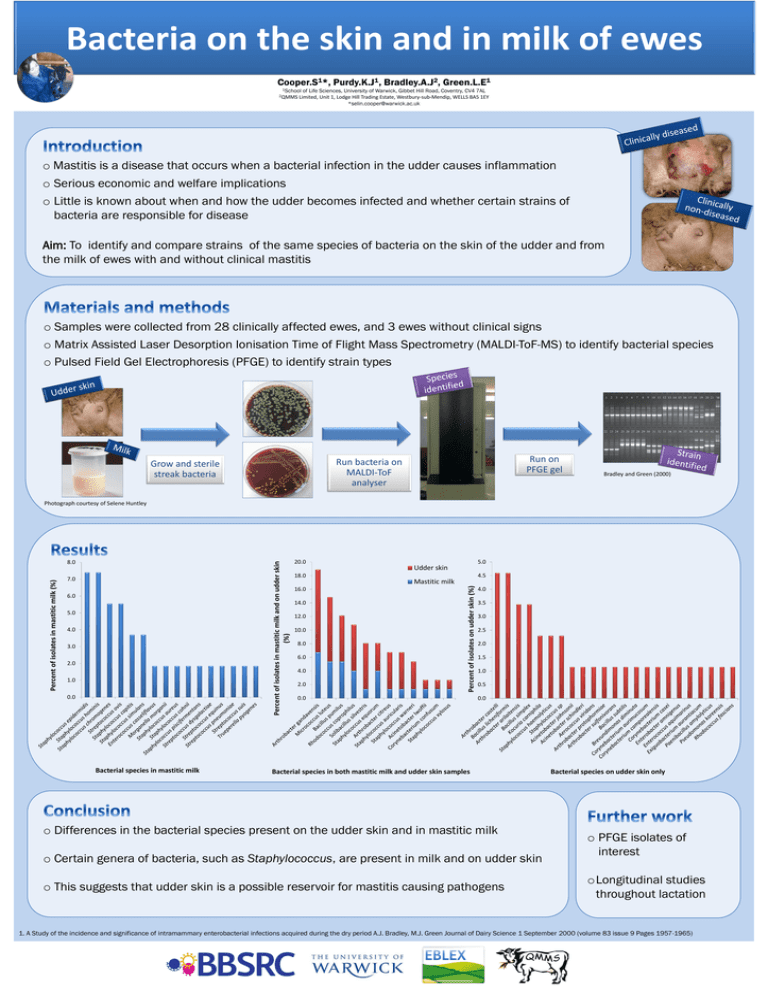
Bacteria on the skin and in milk of ewes The pathogenesis of mastitis in ewes Cooper.S1*, Purdy.K.J1, Bradley.A.J2, Green.L.E1 1School of Life Sciences, University of Warwick, Gibbet Hill Road, Coventry, CV4 7AL 2QMMS Limited, Unit 1, Lodge Hill Trading Estate, Westbury-sub-Mendip, WELLS BA5 1EY *selin.cooper@warwick.ac.uk o Mastitis is a disease that occurs when a bacterial infection in the udder causes inflammation o Serious economic and welfare implications o Little is known about when and how the udder becomes infected and whether certain strains of bacteria are responsible for disease Aim: To identify and compare strains of the same species of bacteria on the skin of the udder and from the milk of ewes with and without clinical mastitis o Samples were collected from 28 clinically affected ewes, and 3 ewes without clinical signs o Matrix Assisted Laser Desorption Ionisation Time of Flight Mass Spectrometry (MALDI-ToF-MS) to identify bacterial species o Pulsed Field Gel Electrophoresis (PFGE) to identify strain types Run on PFGE gel Run bacteria on MALDI-ToF analyser Grow and sterile streak bacteria Bradley and Green (2000) Photograph courtesy of Selene Huntley 7.0 6.0 5.0 4.0 3.0 2.0 1.0 0.0 Bacterial species in mastitic milk 20.0 18.0 16.0 14.0 12.0 10.0 8.0 6.0 4.0 2.0 5.0 Udder skin 4.5 Mastitic milk Percent of isolates on udder skin (%) Percent of isolates in mastitic milk and on udder skin (%) Percent of isolates in mastitic milk (%) 8.0 0.0 4.0 3.5 3.0 2.5 2.0 1.5 1.0 0.5 0.0 Bacterial species in both mastitic milk and udder skin samples o Differences in the bacterial species present on the udder skin and in mastitic milk o Certain genera of bacteria, such as Staphylococcus, are present in milk and on udder skin o This suggests that udder skin is a possible reservoir for mastitis causing pathogens Bacterial species on udder skin only o PFGE isolates of interest oLongitudinal studies throughout lactation 1. A Study of the incidence and significance of intramammary enterobacterial infections acquired during the dry period A.J. Bradley, M.J. Green Journal of Dairy Science 1 September 2000 (volume 83 issue 9 Pages 1957-1965)

